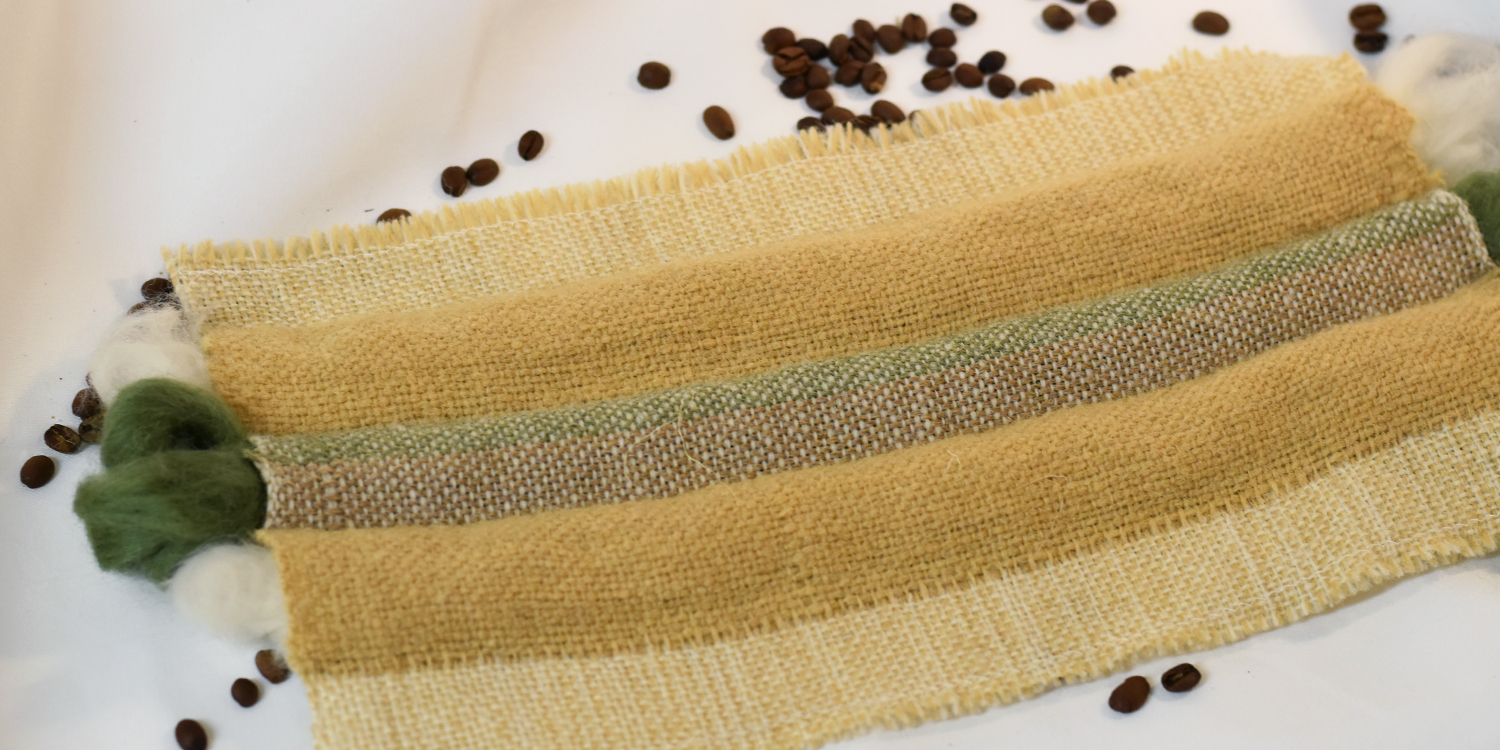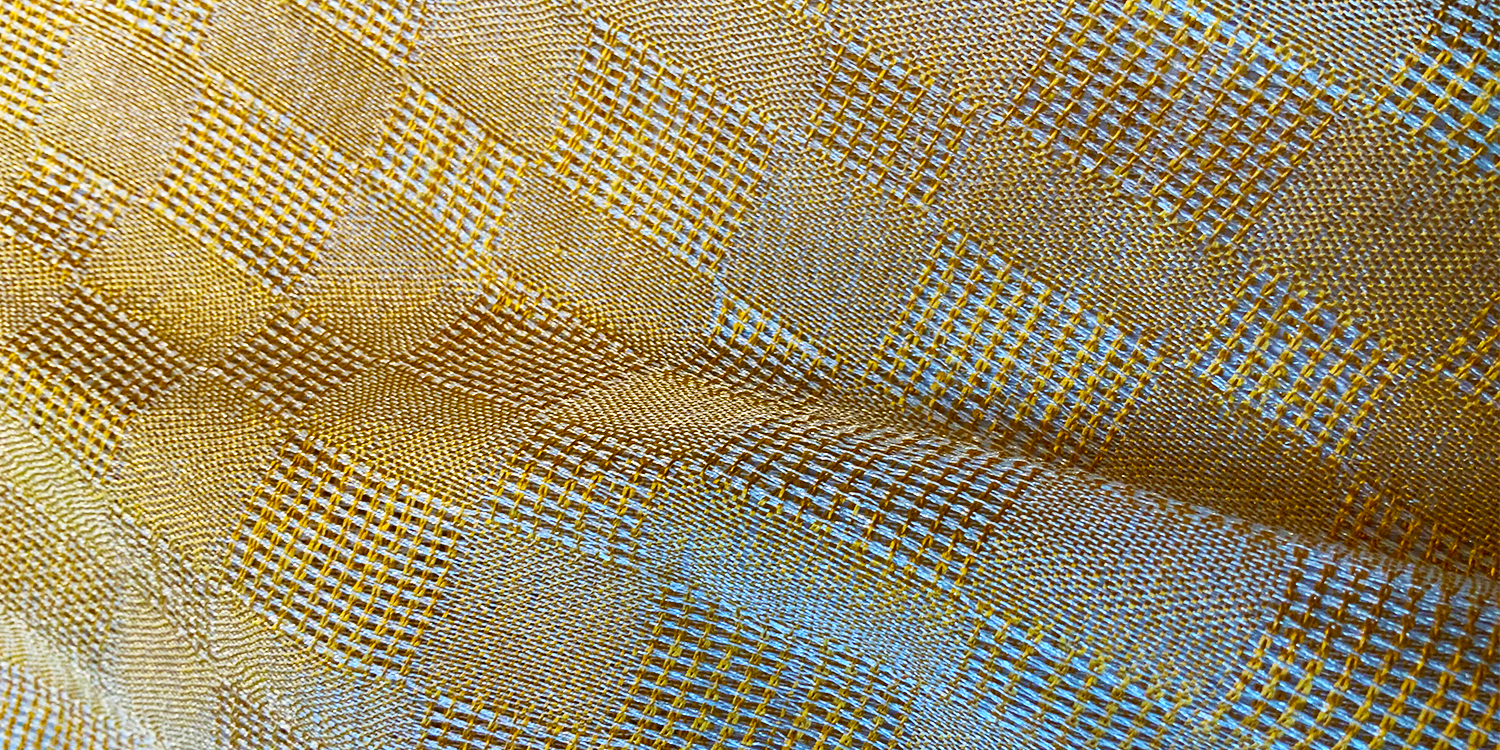Properties & Qualities
Application
Sample Making Other
Colour
White Brown Green
Sample Information
Date of creation
June 2023
Dimensions
Length : 9.5” x Width : 12.5”
Weight
63g
Culture & Context
I have been working as a part time barista for the past 18 months while also pursuing
my textiles career. In this time, I have fallen in love with the process of making coffee
however there is a huge amount of waste that comes with it. Through this project I
wanted to see how many ways I could utilise waste from the coffee industry and turn it
into a new/ experimental material or process.
This sample was inspired by the colours seen throughout roasting process of coffee
as well as focusing on the exploration of surface manipulation while weaving on the
loom using both warps of the double cloth weave. It also looks at how you can further
manipulate the material off the loom using a sewing machine.
Process & Production
The process of this material was firstly setting up the loom. When that was complete I
started weaving. The first stripe was woven having the coffee dyed warp front facing
using a plain weave and the 2ply coffee dyed Galway wool as the weft. This was then
followed by making sure the cream warp was not weaving and only the coffee warp
was weaving and front facing. A green and brown stripe were created and then the
tension of the coffee warp was release so that these striped could be pulled forward
and folded. It was then secured in place with plain weave using both cloths and the
coffee warp was re-tensioned. This was repeated until I had the desired amount of
lifted stripes.
Once the sample was complete and off the loom, I then sewed 3 lines. To going
downwards highlighting the town side of the stripes and one going up the centre to
highlight the green side of the stripe.
Recipe Details
Loom Set Up :
Double Cloth set up using 16 shafts on a 24 shaft shaft ARM Touch 60 Loom.
Warp 1 & 2 : Galway Wool 1ply – length 4 yards, one dyed with waste coffee grounds
the other was left plain.
Weight : 232g for both.
24epi, 336 ends in total
Width : 14”
Straight draft in blocks AABAABAABAABAA
Material Sample :
3” stripe plain weave using the 2ply coffee dyed Galway wool yarn, ensuring the
coffee warp was front facing.
Then make sure all the cream warp threads are set to not weave and only the coffee
warp threads weave.
2” stripe plain weave using the brown merino wool and a 2” stripe of green as the weft
were woven making sure only the coffee warp threads are weaving and front facing
here.
Then the tension of the coffee warp was released and the two stripes are pulled
towards us going perpendicular to the base cloth and secured in place by weaving
some plain weave across both the cream and coffee warp threads.
This was repeated until the sample was the desired length and structural stripes were
complete.
Credits
Craft Maker
Amy Kerr (AK Textiles)
Library Contributor
National College of Art & Design Ireland
Photographer
Amy Kerr






















